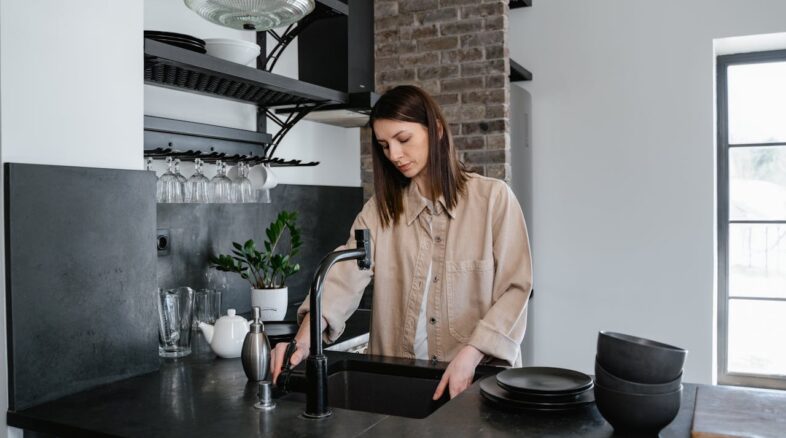
Photo by MART PRODUCTION:
In our quest for cleanliness, we often inadvertently introduce harmful chemicals into our homes. From bleach to ammonia, many conventional cleaning products contain toxic ingredients that can pose risks to both our health and the environment. However, there’s a growing movement towards embracing natural alternatives to create a chemical-free cleaning routine. In this guide, we’ll explore the detrimental effects of common cleaning chemicals, learn how to identify toxic ingredients and discover practical tips and DIY recipes for creating a healthier home environment.
Understanding the Risks of Common Cleaning Chemicals
Many traditional cleaning products contain a cocktail of chemicals that can have adverse effects on our health. Ingredients such as ammonia, chlorine, phthalates, and parabens have been linked to respiratory issues, skin irritations, hormone disruption, and even cancer. Furthermore, these chemicals can linger in the air and on surfaces, contributing to indoor air pollution and potential long-term health hazards.
Identifying Toxic Ingredients
To detox your home, familiarize yourself with the ingredients listed on cleaning product labels. Look out for substances like sodium lauryl sulfate (SLS), triclosan, and synthetic fragrances, which can be harmful to human health and the environment. Opt for products with transparent labeling and certifications such as “green,” “eco-friendly,” or “non-toxic.”
Common Household Chemicals with Legal Pasts
In recent years, several household chemicals have been the subject of lawsuits due to their harmful effects on consumers. One notable example is glyphosate, the active ingredient in many herbicides, including the popular product Roundup. The International Agency for Research on Cancer (IARC) has classified glyphosate as a probable human carcinogen, leading to numerous lawsuits against the manufacturer, Monsanto (now owned by Bayer). These lawsuits allege that exposure to glyphosate has caused cancer in individuals who used the product regularly.
Another household chemical that has faced legal scrutiny is formaldehyde, commonly found in furniture, flooring, and household products. Formaldehyde is known to off-gas over time, leading to indoor air pollution and potential health risks. Lawsuits have been filed against manufacturers of laminate flooring and other products containing formaldehyde, alleging that prolonged exposure has caused respiratory issues, allergic reactions, and even cancer in consumers.
Additionally, talcum powder, often used in baby powder and cosmetic products, has been the subject of lawsuits linking its use to ovarian cancer and mesothelioma. Some talcum powder products have been found to contain asbestos, a known carcinogen, leading to claims of negligence and failure to warn on the part of manufacturers.
These legal battles highlight the importance of being vigilant about the chemicals we bring into our homes and the potential risks they may pose to our health. By opting for natural alternatives and non-toxic products, consumers can reduce their exposure to harmful substances and protect themselves from potential health hazards.
Natural Alternatives for Chemical-Free Cleaning
Fortunately, there are plenty of natural alternatives that can effectively clean your home without the use of harmful chemicals. Vinegar, baking soda, lemon juice, and essential oils are powerful ingredients that can tackle dirt, grease, and grime. Vinegar, for example, is acidic and can dissolve mineral deposits, sanitize surfaces, and neutralize odors. Baking soda acts as a gentle abrasive and deodorizer, while lemon juice cuts through grease and leaves a fresh scent. Essential oils like tea tree, lavender, and eucalyptus add fragrance and possess antimicrobial properties.
DIY Recipes for Homemade Cleaners
Making your own cleaning products is cost-effective and allows you to control the ingredients and customize scents to your preference. Here are a few simple recipes to get you started:
All-Purpose Cleaner
- Mix equal parts water and white vinegar in a spray bottle.
- Add a few drops of your favorite essential oil for fragrance.
- Use on countertops, floors, and other surfaces for general cleaning.
Glass Cleaner
- Combine 1 cup of water, 1 cup of white vinegar, and 1 tablespoon of cornstarch in a spray bottle.
- Shake well before use and spray onto glass surfaces.
- Wipe with a clean cloth for streak-free shine.
Toilet Bowl Cleaner
- Sprinkle baking soda into the toilet bowl.
- Add a few drops of tea tree or lemon essential oil.
- Scrub with a toilet brush and flush for a sparkling clean bowl.
Eco-Friendly Brands and Products
If making your own cleaners isn’t feasible, there are many eco-friendly brands that offer non-toxic alternatives to conventional cleaning products. Look for brands that prioritize natural ingredients, biodegradable packaging, and sustainable manufacturing practices. Some popular options include Mrs. Meyer’s, Seventh Generation, and Ecover. These products are safer for your family and gentler on the planet.
Tips for Maintaining a Chemical-Free Home
Transitioning to a chemical-free cleaning routine is a journey that requires commitment and consistency. Here are some additional tips for maintaining a healthier home environment:
- Invest in reusable cleaning tools such as microfiber cloths, mop pads, and scrub brushes to reduce waste.
- Open windows and doors while cleaning to improve ventilation and reduce exposure to indoor pollutants.
- Store cleaning products securely out of reach of children and pets to prevent accidental ingestion.
- Consider using natural pest control methods such as diatomaceous earth, essential oils, and botanical repellents instead of chemical pesticides.
- Regularly declutter and clean your home to minimize dust and allergens, promoting better indoor air quality.
Looking Forward to a Chemical-Free Home
Creating a chemical-free cleaning routine is not only beneficial for your health but also for the environment. By opting for natural alternatives, DIY recipes, and eco-friendly products, you can effectively detox your home and reduce your exposure to harmful chemicals. Whether you’re wiping down countertops or scrubbing the toilet, making conscious choices about the products you use can contribute to a cleaner, safer living space for you and your family.

